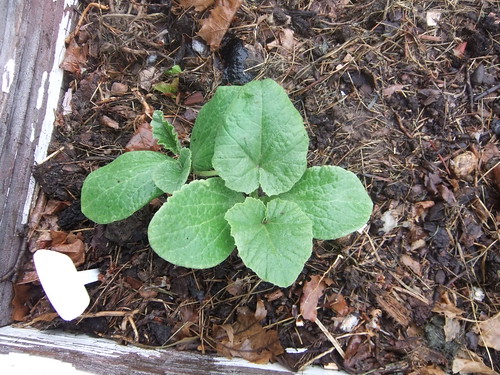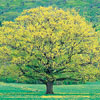|
|
Post by Joseph Lofthouse on Feb 22, 2012 18:12:33 GMT -5
what cultivars are you planning for 2012? how do you select for watermelon cultivars to be trialed? My 2012 planting plan for the watermelon breeding program is approximately as follows: - 100 seeds of Joseph's 2011 proto-landrace planted fruit-to-row.
- 100 seeds of Keen101's 2011 proto-landrace. (Also from a very-cold short-season garden at high altitude.)
- 100 seeds of Diane's 2011 proto-landrace. From a collaborator's garden in a warmer climate. Being planted mainly as a source of diversity, just in case any short season melons happen to show up.
- 100 seeds from Susan, a local collaborator who also started a proto-landrace in 2011. Will be planted fruit-to-row.
- 5 seeds each of about 20 varieties that people have sent for me to trial, all jumbled up together.
- 10 seeds of the Saldaña melon
- About 10 seeds each of my family's subvariety of Charleston Gray, and of Blacktail mountain. These serve as a control group, so that I can compare the landrace groups to melons with known characteristics.
My program, the Keen101 program, and Susan's program also shared seeds between us in the fall of 2010. In early summer I intend to weed heavily, chopping out any melon that is growing slowly. I'll grow the production melons in a different field. I plant 5 seeds of any melon cultivar that I can get my hands on, regardless of what it is or where it came from. Due to my garden having an extremely short season, if I'm buying seeds to go into a breeding program one of my primary considerations is days-to-maturity as advertized by the seed catalogs. I consider the DTM data in catalogs to be a complete fairy tale, but there seems to be a token of truth even in the most outlandish stories. After this year, I will pretty much be done trialing melons from far away places... My locally adapted melons will be doing so much better that there doesn't seem to be much point of trialing additional cultivars. I will continue however to swap seeds with my closest collaborators who share low-humidity high-altitude cold/short-season with me. Any landrace varieties from cold high-altitude climates that I can get my hands on will always have space for a large trial in my garden. |
|
|
|
Post by terracotta on Feb 25, 2012 14:56:32 GMT -5
how do you plan on segregating them by color? unless your market is completely different from mine people will want to know what they are buying.
|
|
|
|
Post by Joseph Lofthouse on Feb 25, 2012 15:26:53 GMT -5
how do you plan on segregating them by color? unless your market is completely different from mine people will want to know what they are buying. We have completely different markets.
My produce attracts people that like adventure and surprise. My market values diversity of shape, and color, and taste. If someone wants monotonous produce without variation they can get that from The Company grocery store. I will not be segregating by color in watermelon. I do not segregate by color in summer squashes, or chard, or beets, or carrots, or onions, or winter squashes, or cucumbers, or corn, or anything else that I grow. I'm not inclined to treat watermelon as a special case. Besides that, just about everything I grow goes into CSA baskets: My people get what I am able to grow, when I am able to grow it.
|
|
|
|
Post by terracotta on Mar 7, 2012 17:33:54 GMT -5
|
|
|
|
Post by Joseph Lofthouse on Mar 7, 2012 18:46:21 GMT -5
Would be interesting to know what city.... I figure that Lewiston Idaho shares a lot of climatic characteristics with the Volga River. |
|
|
|
Post by terracotta on Mar 8, 2012 18:38:08 GMT -5
wild types are very furry which makes a microclimate around them that protects it from bright light,arid conditions. Does any ones leaf hair seem high in cold regions?
|
|
|
|
Post by terracotta on Apr 22, 2012 12:12:09 GMT -5
|
|
|
|
Post by samyaza on May 13, 2016 16:31:25 GMT -5
My growing conditions are so radically different from those found in Russia, and I have tried so many "Siberian" varieties that did very poorly in my garden, that I can't get excited about trying one more supposedly cold tolerant Russian plant. My garden is colder, and my growing season is shorter. The sun is much hotter, and the air is tremendously dryer. The variation between nighttime and daytime temperatures is twice as much in my garden as it is in Russia. The Siberian varieties might be good candidates for growing in the pacific northwest, but they are particularly unsuitable to my garden. Varieties from Iowa grow better in my garden than those from Russia. I hope I can grow watermelon again next year. I grew a few Cream of Saskatchewan plants in 2011. It was an exceptionally cold summer : 57°F/14°C during the day in July. I had given one to my grand mother who managed to harvest a single fruit. She said it was good... but strangely white fleshed lol If I had to describe my climate, it should be : a longer season than Joseph, with cold nights, rarely warm, days most often cool, sometimes cold, more rarely hot. Far too much rain. Nothing like a northern desert, most probably like somewhere in British Columbia. I have Blacktail Mountain seeds, but they're getting old. There are good feedbacks in France for this variety. |
|
|
|
Post by keen101 (Biolumo / Andrew B.) on May 24, 2019 8:41:48 GMT -5
I may be selecting for cold tolerance again this spring inadvertantly. I planted my seeds early around May 1st instead of May 10th-ish as we usually get our last snow or rain storm around then. But didn't irrigate until about the 10th. But this week around the 20th we got a late frost and temps dipped to around freezing for a night and it's been chilly and cool and rainy since.
I'm hoping the seedlings survived, but I figured there is a good chance they did. First i'm not sure if they have germinated yet. But even if they did, direct seeded seedling have slightly more cold tolerance than transplanted. Plus most of them are citron hybrids and back crosses, so they should be more hardy by a bit too. I'll check on the garden plot today and report back.
|
|
|
|
Post by keen101 (Biolumo / Andrew B.) on May 25, 2019 7:52:42 GMT -5
I found one happy seedling. I'm pretty sure it was the first to germinate, so I marked it with a popsicle stick. Based on where it is I might be able to figure out which line it is from.
|
|
|
|
Post by lochaberbreeder on May 25, 2019 20:17:34 GMT -5
For a cold tolerant watermelon, check out the new thread in the Cucurbitacea Link?
I've sown some PI 482261 the other day, hoping to get that cold resistant gene for my crosses. Other accessions are also said to be (even better) cold resistant. I plan on ordering them for next year.
|
|



